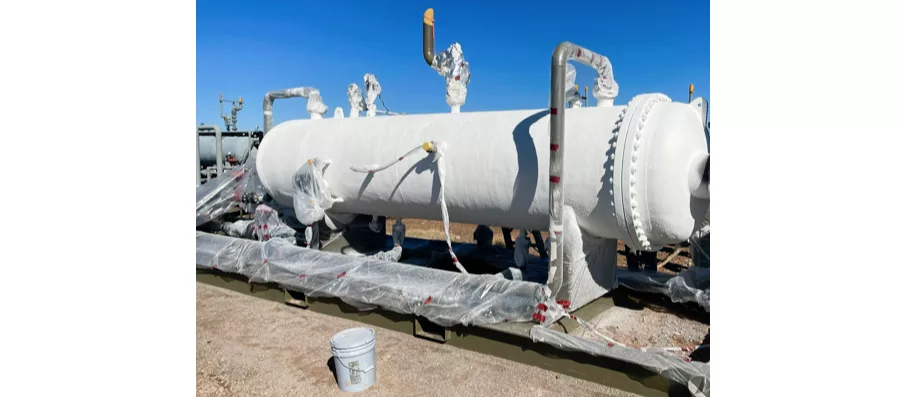Sherwin-Williams Releases New Insulative Coating

Photo courtesy of Sherwin-Williams.
The Heat-Flex® 7000 thermal insulative coating system from Sherwin-Williams protective and marine offers personnel protection, insulating capabilities and solar heat reflectivity for an array of industrial applications. The single-component, spray-applied coating system meets OSHA standards for protecting personnel from skin-contact burns on assets operating at temperatures up to 350°F (177°C) in one coat.
A single coat of Heat-Flex 7000 can eliminate the costs of installing, inspecting and repairing conventional insulation and cladding systems for personnel skin-contact protection, thereby also eliminating the common threat of corrosion under insulation (CUI). In addition, the coating reduces thermal losses on assets that need to stay warmer or diminishes solar heat gain on assets that need to stay cooler.
Able to be directly applied to hot substrates, Heat-Flex 7000 is spray-applied in a single coat – typically 50-75 mils dry film thickness (DFT) – over a required corrosion-resistant primer. The coating system features new technology that yields a thick, fully cured coating film with a high volume that effectively resists the transfer of heat from the underlying substrate to the surface, as well as from the surface to the substrate.
Although Heat-Flex 7000 does not provide as much R-value as conventional insulation in dry conditions, it forms a closed-cell film that resists moisture penetration – from rain, water sprays or humidity – far more effectively than conventional insulation. Therefore, its thermal efficiency remains consistent in even the wettest conditions. By contrast, any cracks or seams in insulation/cladding systems can admit and hold water, which displaces insulating air and greatly reduces the insulation system’s R-value. This moisture may become trapped at the insulation/substrate interface, significantly raising the risk of the formation and proliferation of CUI.
Heat-Flex 7000 can protect heat-sensitive assets (tanks, fuel pipelines, water cooling lines and other assets) from solar heat gain. In these situations, a reflective white formulation is recommended to insulate the asset, enabling it to maintain a lower internal operating temperature. Lower operating temperatures can help reduce the loss of fuels or cooling water in tanks and pipes due to vaporization, as well as reduce the need for expensive vapor-recovery or cooling equipment.
For more information, visit: industrial.sherwin-williams.com.
Looking for a reprint of this article?
From high-res PDFs to custom plaques, order your copy today!






